Small Front Garden Ideas No Grass: Creative Designs for a Lush Entrance
Transforming a small front garden into an inviting space without grass can be both exciting and beneficial. Why stick to a traditional lawn when you can create a low-maintenance and unique garden that stands out? Whether you’re aiming for a lush haven with vibrant plants or a more structured look with stones and planters, there are plenty of ways to make the most of the space.
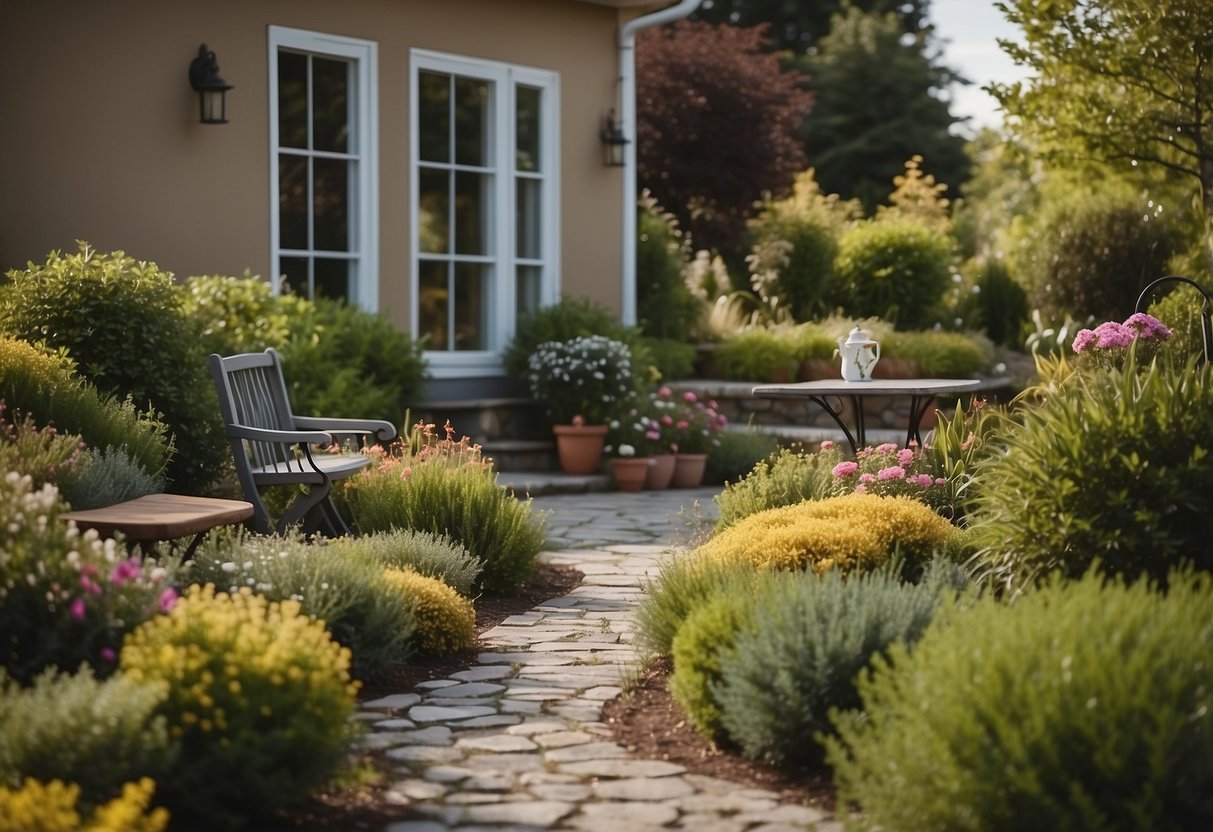
You can explore various designs that not only conserve water but also attract local wildlife and make your garden more environmentally friendly. Diverse textures, colors, and heights can bring a dynamic feel to even the smallest areas.
1) Herb Spiral

An herb spiral is a fantastic way to add greenery and functionality to your small front garden.
This design uses a spiral shape made from stones or bricks. The spiral shape maximizes space, allowing you to grow various herbs in a small area.
With a sunny side and a shady side, you can grow herbs with different light needs. Perfect choices include rosemary, thyme, and lavender for the sunny spots. For shadier spots, consider parsley, cilantro, and chives.
An herb spiral is not only practical but also adds a unique visual element to your garden.
2) Vertical Garden

A vertical garden is a great way to add greenery without taking up ground space.
You can use walls, fences, or even build a trellis. There are lots of options like hanging planters, tiered planters, and wall-mounted kits.
Vertical gardens are perfect for small spaces. They help you maximize your area and add a unique visual touch to your front yard. Check out some ideas for vertical gardens if you’re short on space.
3) Potted Succulents
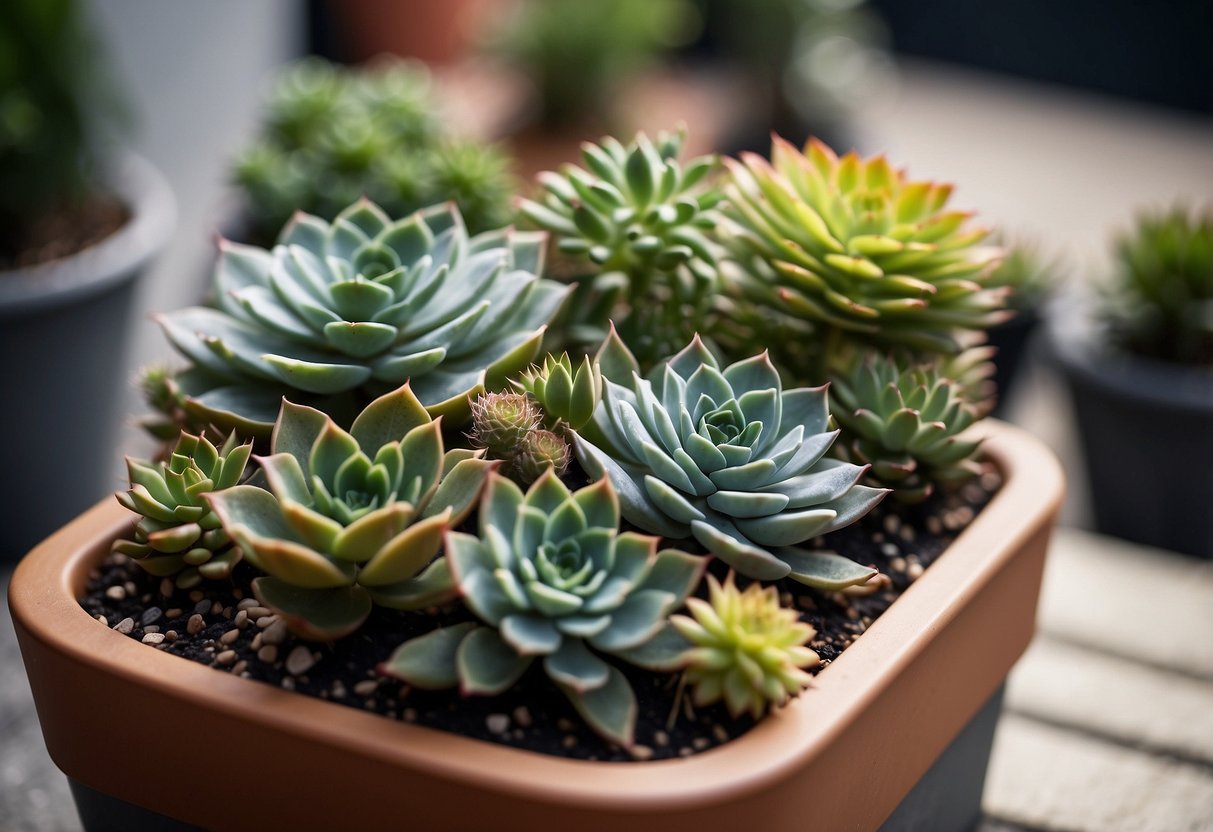
Potted succulents can bring life and color to your small front garden. They are easy to care for and come in many shapes and sizes.
You can place them on steps, hang them on walls, or arrange them in groups on your porch. Succulents need little water, so they are perfect if you want a low-maintenance garden.
Mix and match different types to create interesting displays. Consider using colorful pots to add even more visual appeal.
4) Raised Planter Boxes
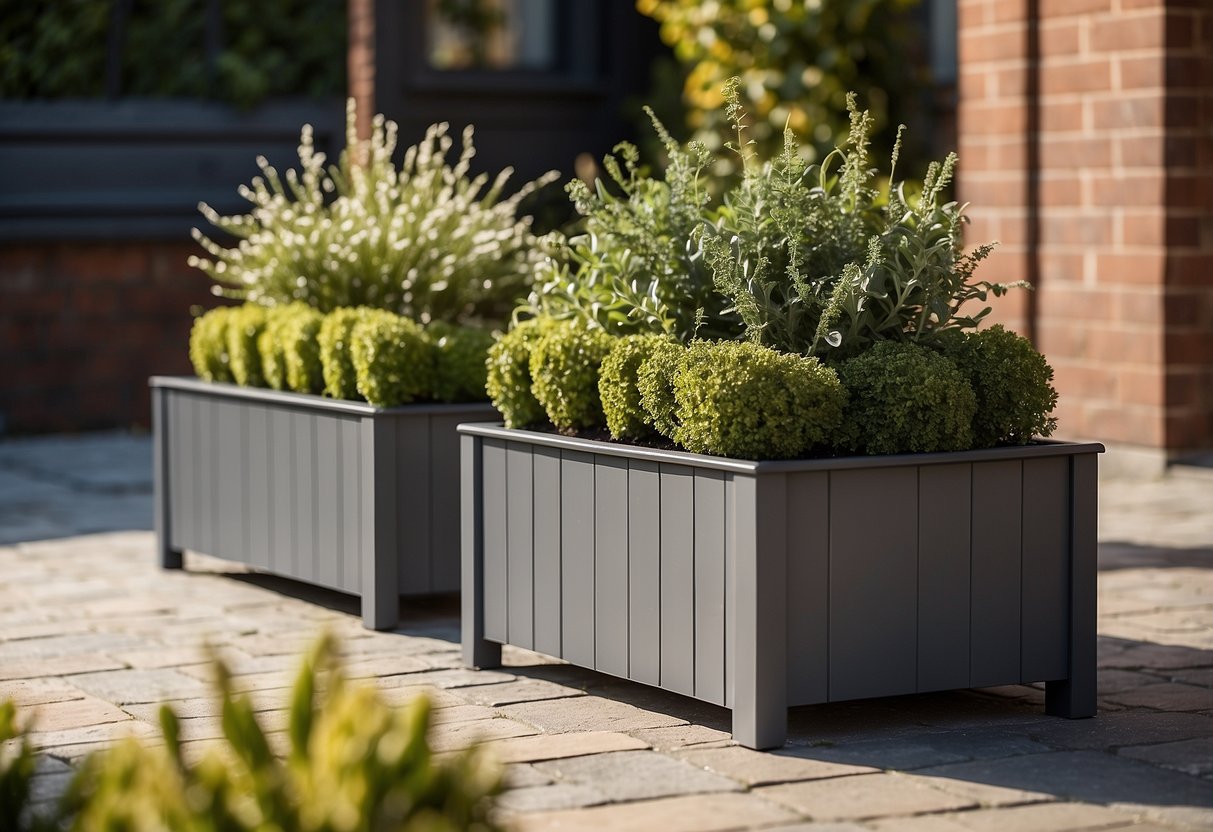
Raised planter boxes are a great way to add greenery to your front garden without needing grass. They are easy to build and can fit into small spaces.
You can make raised planter boxes from wood, metal, or even recycled materials. Use simple DIY plans to create a box that suits your space and style.
These boxes let you grow a variety of plants, from vegetables to flowers. Their height can also make gardening easier on your back.
5) Fairy Garden

A fairy garden can transform your small front yard into a magical space. Use plants like ferns, moss, and creeping thyme for lush ground cover.
Add miniature fairy houses, tiny bridges, and little figurines to give it a magical touch. A small flower pot can make a perfect spot for this whimsical setup.
Consider adding miniature accessories like fairy doors or tiny furniture. Plant tiny flowers and greenery to create a fun, enchanted forest atmosphere right at your doorstep.
6) Hanging Baskets
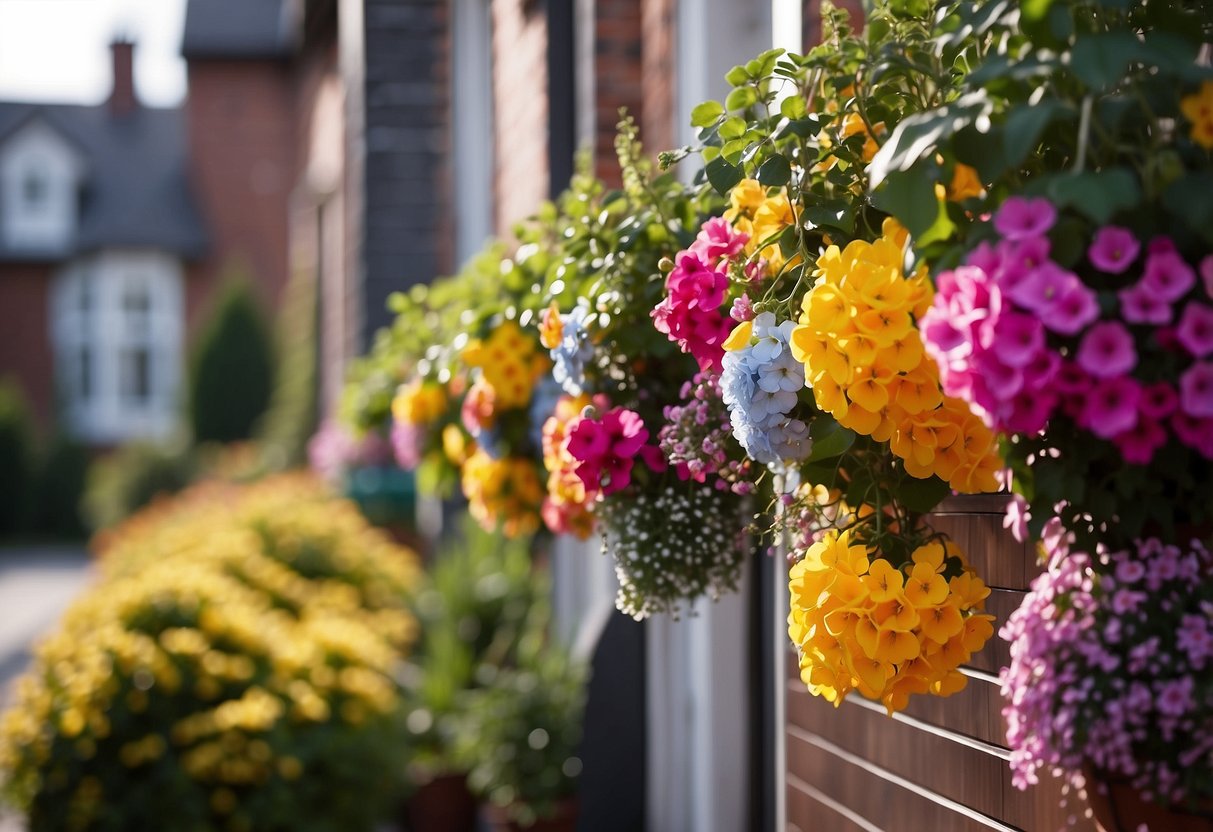
Hanging baskets are a great way to add color and life to your front garden without using grass.
You can easily hang them from a porch, wall, or even a tree branch.
Consider filling your baskets with vibrant flowers or interesting foliage for a contemporary look. A mix of foliage plants can make your hanging baskets stand out. Check out some creative hanging basket ideas to inspire you.
7) Miniature Zen Garden
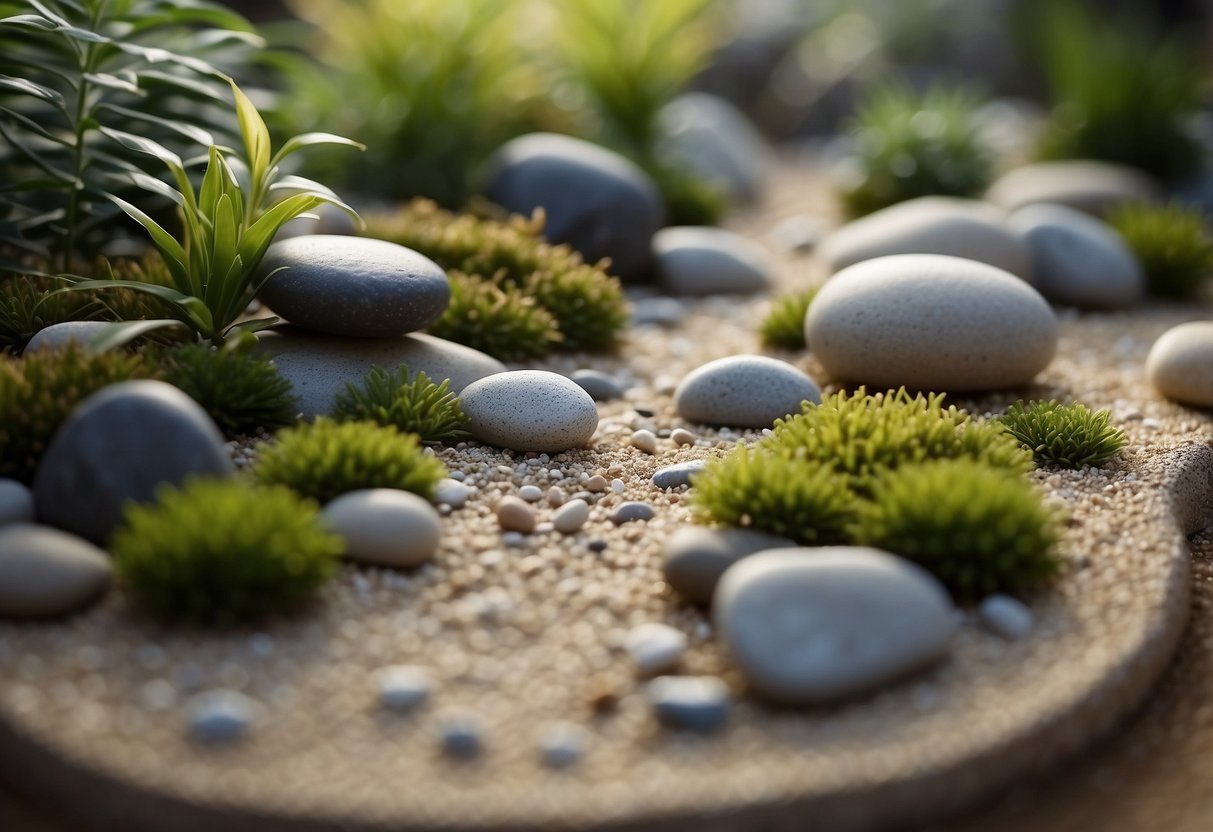
A miniature Zen garden can transform your small front yard into a tranquil space. Use a shallow tray filled with sand, stones, and miniature plants to create a peaceful scene.
You can add a small rake to create patterns in the sand. This simple activity can be very calming.
Place tiny statues or lanterns to enhance the Zen ambiance. This setup not only looks beautiful but also promotes relaxation.
Experiment with different elements to make it unique and inviting.
8) Garden Gnomes and Figurines
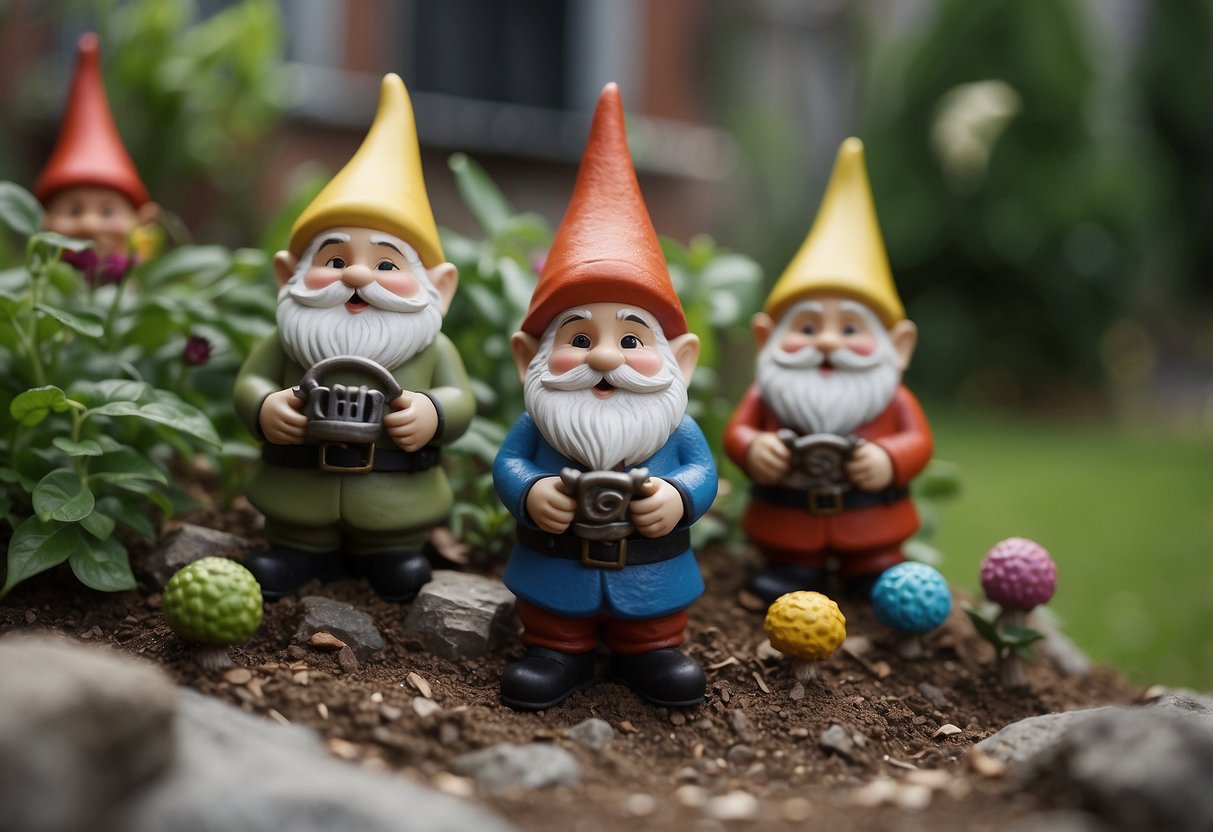
Adding garden gnomes and figurines can bring a lot of charm to your small front garden. These little figures can create a fun and whimsical atmosphere.
You might consider placing a gnome with a wheelbarrow to make it look like you have a tiny helper. Another idea is to build a mini gnome home using small boxes and driftwood.
These figurines can be simple or detailed, adding character and a personal touch. Find the perfect spot for them among your plants or next to a tree for a delightful addition to your garden.
9) Pebble Pathways
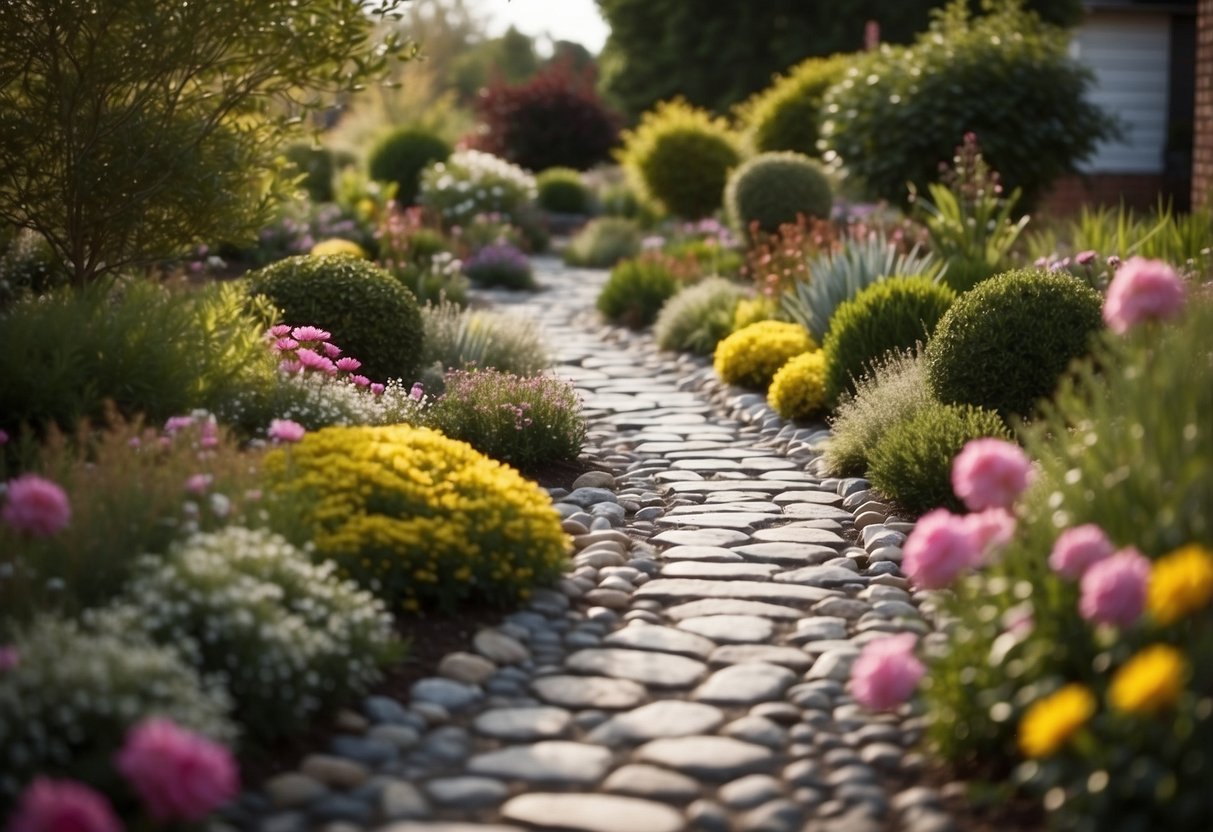
Pebble pathways can add a charming look to your small front garden. They are easy to install and maintain, making them a great choice for a no-grass area.
You can use different sizes and colors of pebbles to create unique designs. This makes your pathway both functional and stylish.
Creating a pebble pathway can help guide visitors through your garden. It also adds texture and visual interest, making your small front yard feel more inviting.
10) Solar Garden Lights

Solar garden lights are a great way to brighten your small front garden without using grass.
You can use fairy lights to decorate fences or shrubs, creating a cozy and magical atmosphere.
Try hanging solar lanterns for a charming and inviting look, perfect for warm evenings outdoors.
You can also place solar pathway lights along walkways to safely guide guests and highlight your beautiful plants.
Benefits of No-Grass Gardens

No-grass gardens offer several key advantages, including easier upkeep, less water usage, and great appeal throughout the year.
Low Maintenance
No-grass gardens need much less work compared to traditional lawns. You don’t have to mow regularly or apply fertilizers and pesticides. This is perfect if you have a busy lifestyle or just want to spend more time enjoying your garden rather than working in it.
You can use ground cover plants, like creeping thyme, sedum, and ajuga. These plants are easy to grow and don’t need much care. They also help prevent soil erosion and keep the soil moist.
Water Conservation
Traditional lawns need a lot of water to stay green, especially in hot weather. No-grass gardens can help you save a significant amount of water. By using drought-resistant plants and hardscaping, you reduce your garden’s water needs, which is both eco-friendly and cost-effective.
For instance, incorporating drought-resistant plants, like native species and succulents, means you’ll water less often. Gravel and stones also help maintain moisture in the soil.
Year-Round Appeal
Grass lawns often turn brown or patchy in extreme weather. No-grass gardens, on the other hand, can look beautiful throughout the year. Use different textures, colors, and structures to create a visually interesting space in every season.
Including statues or sculptural elements can add year-round interest. You can also design pathways with materials like flagstone or bricks to guide visitors and create focal points. This way, your garden remains inviting and pleasant regardless of the season.
Design Elements for Small Gardens

Creating a small garden without grass involves choosing the right plants, incorporating hardscapes, and creating focal points to draw attention and add interest.
Choosing the Right Plants
In a small garden, it’s crucial to select plants that won’t overcrowd the space. Ground cover plants like creeping thyme or ajuga create a lush, low-maintenance garden bed. Opt for vertical gardening solutions such as trellises for climbing plants like clematis or jasmine.
Container gardening is also effective. Use pots of various sizes to add layers and dimensions. Herbs like basil or rosemary are practical choices. Native plants are often easier to maintain and are well-suited to the climate, ensuring your garden thrives with minimal effort.
Incorporating Hardscapes
Hardscapes can make your garden more functional and visually appealing. Consider adding a stone pathway or using materials like bricks and flagstone. This not only defines walkways but also reduces the need for frequent maintenance.
Raised beds are perfect for small spaces. They provide clear, defined planting areas and make gardening more accessible. Think about adding small decks or patios for seating areas, allowing you to enjoy your garden comfortably.
You can even use recycled materials to create unique, personalized features like benches or planters, adding a touch of sustainability to your garden design.
Creating Focal Points
Focal points draw the eye and give your garden a sense of structure. Sculptures can range from modern abstract pieces to traditional statues, depending on your style. These add personality and create visual interest.
Water features like small fountains or birdbaths provide a calming effect and attract wildlife. Statement planters filled with striking plants like aeoniums can also serve as focal points, bringing color and drama to your garden.
Lastly, think about adding lighting. Soft, subtle lighting along pathways or around focal points enhances the garden’s ambiance, making it enjoyable even during the evening.
Sustainable Gardening Practices

Incorporating sustainable gardening practices in your small front garden can reduce maintenance efforts, conserve resources, and create a healthy environment for plants and wildlife.
Using Native Plants
Native plants are well-suited to your local climate and soil, requiring less water and fewer chemicals. They are adapted to the local environment, making them resilient and low maintenance. Examples of native plants include purple coneflower, black-eyed Susan, and milkweed, which can thrive with minimal intervention.
Consider grouping plants with similar water and sunlight needs to optimize conditions for each. This practice not only promotes plant health but also reduces resource use. By choosing native plants, you attract local pollinators like bees and butterflies, enhancing biodiversity.
Composting and Mulching
Composting converts organic waste into nutrient-rich compost that improves soil health. Start a compost bin with kitchen scraps like fruit peels, coffee grounds, and garden waste. Ensure a balance between green materials (nitrogen-rich) and brown materials (carbon-rich) for efficient decomposition.
Mulching involves covering soil with organic material like wood chips or straw. Mulch helps retain moisture, suppress weeds, and regulate soil temperature. It also gradually decomposes, adding nutrients back into the soil. By using mulch, you reduce the need for frequent watering and chemical fertilizers, fostering a healthier garden ecosystem.
Integrated Pest Management
Integrated Pest Management (IPM) is a sustainable approach that minimizes chemical pesticide use. IPM strategies include physical barriers, such as nets or row covers, to protect plants from pests. Encourage beneficial insects like ladybugs and spiders that naturally control harmful pests by planting a variety of plants.
Regularly inspect plants for signs of pest damage and address issues promptly to prevent infestations. If needed, use natural pest control methods, such as neem oil or insecticidal soap, which are safer for the environment and non-target species. Implementing IPM in your garden reduces harm to beneficial organisms and maintains a balanced ecosystem.







